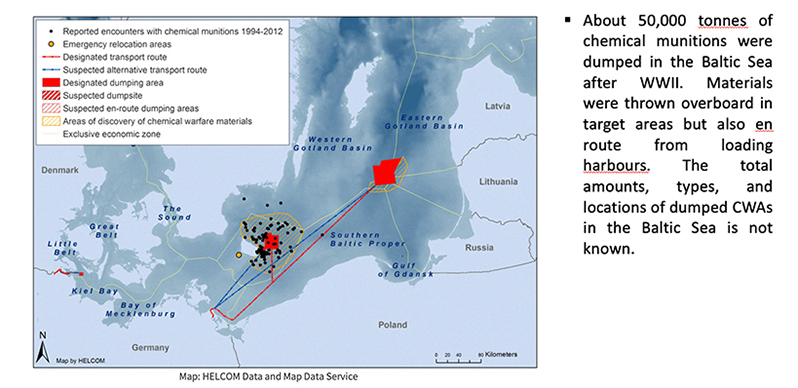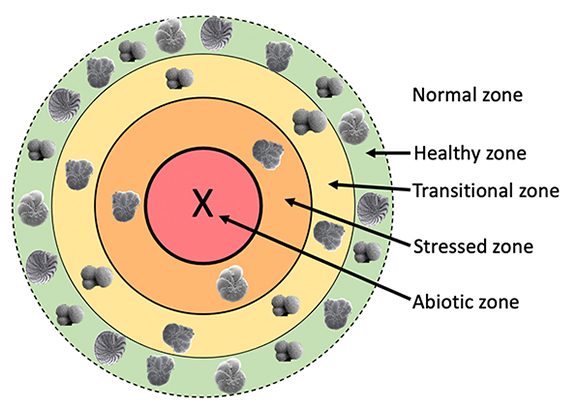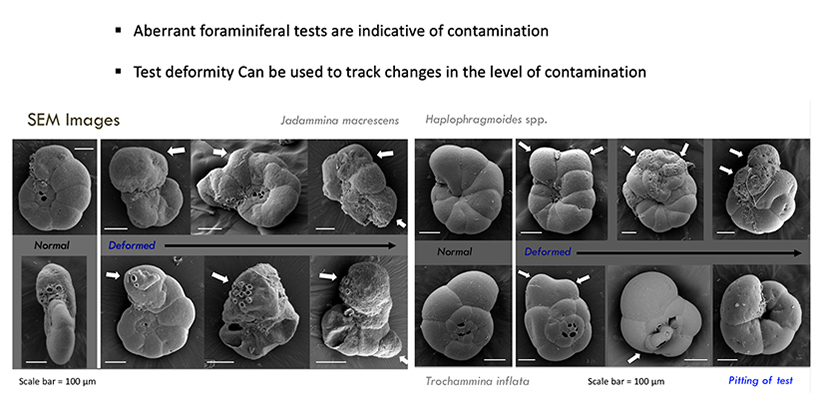The Department of Earth Sciences Professor Tim Patterson was awarded research funding last week from the Organisation for the Prohibition of Chemical Weapons (OPCW), to investigate the environmental impact of corroding chemical weapons dumped in the years after WWII in the Baltic Sea. Below is a short description on the research funding.
Development of novel bio-indicators for the detection of chemical munitions agents in marine environments
As part of its international cooperation program for capacity building in the areas of peaceful applications of chemistry, the Organisation for the Prohibition of Chemical Weapons has awarded Dept. of Earth Sciences Prof. Tim Patterson, Adjunct Prof. Dr. Jennifer Galloway (GSC, Calgary), Adjunct Prof. Helen Roe (Queen’s University Belfast), Prof. Hamed Sanei, Aarhus University, Denmark, and Dr. Nawaf Nasser, 25,000 Euros to carry out proof of concept research to investigate the environmental threat posed by arsenic and other contaminants of concern that are leaching from chemical weapons shells; some 50,000 tons of which were dumped into the Baltic Sea in the years after WWII.


These munitions represent an environmental threat as their chemical agents could damage the environment as corroding shells start leaching after decades of exposure to corrosive marine environments. These munitions represent scattered point sources of pollution that are difficult to control, making the Baltic Sea a less safe environment for commercial activities. The arsenic bearing chemical weapons agents dumped there pose a particularly serious threat due to the toxicity, bioavailability, and mobility of this element. New science and technological innovations are a necessary first step in the recovery and destruction and risk assessment of these dumped chemical weapons.

Our ongoing research on analogous heavily arsenic-contaminated freshwater systems in Canada’s North, utilize sensitive microscopic bioindicators of arsenic contamination, as well as sequential HAWK pyrolysis of organic matter, to track arsenic mobility. The methodologies developed to carry out that research will be directly applicable to the new Baltic Sea initiative. Of particular interest to us is the complex biogeochemical interactions that we hypothesize take place between arsenic and organic matter in the sediments adjacent to chemical weapons agents.The role of organic matter in element mobility is a critical consideration in environmental and health risk assessment, especially due to increases in primary production expected under 21st c. climate warming. In parallel we will examine the distribution of foraminifera, microscopic marine shelled protozoans, that are highly sensitive to contamination. Foraminifera have been demonstrated to be particularly effective as pollution monitoring tools, especially their responsiveness to heavy metal contamination such as arsenic, which impacts their overall abundance and species diversity, shell chemistry, and shell morphology.

Galloway, J.M., Patterson, R.T., Nasser, N., Roe, H., Sanei, H. 2020. Development of novel bioindicators for the detection of chemical weapons agents in aquatic environments: Insights from one of Canada’s most contaminated sites. Presentation to the Organization for the Prohibition of Chemical Weapons, Scientific Advisory Board, November 10th, 2020.